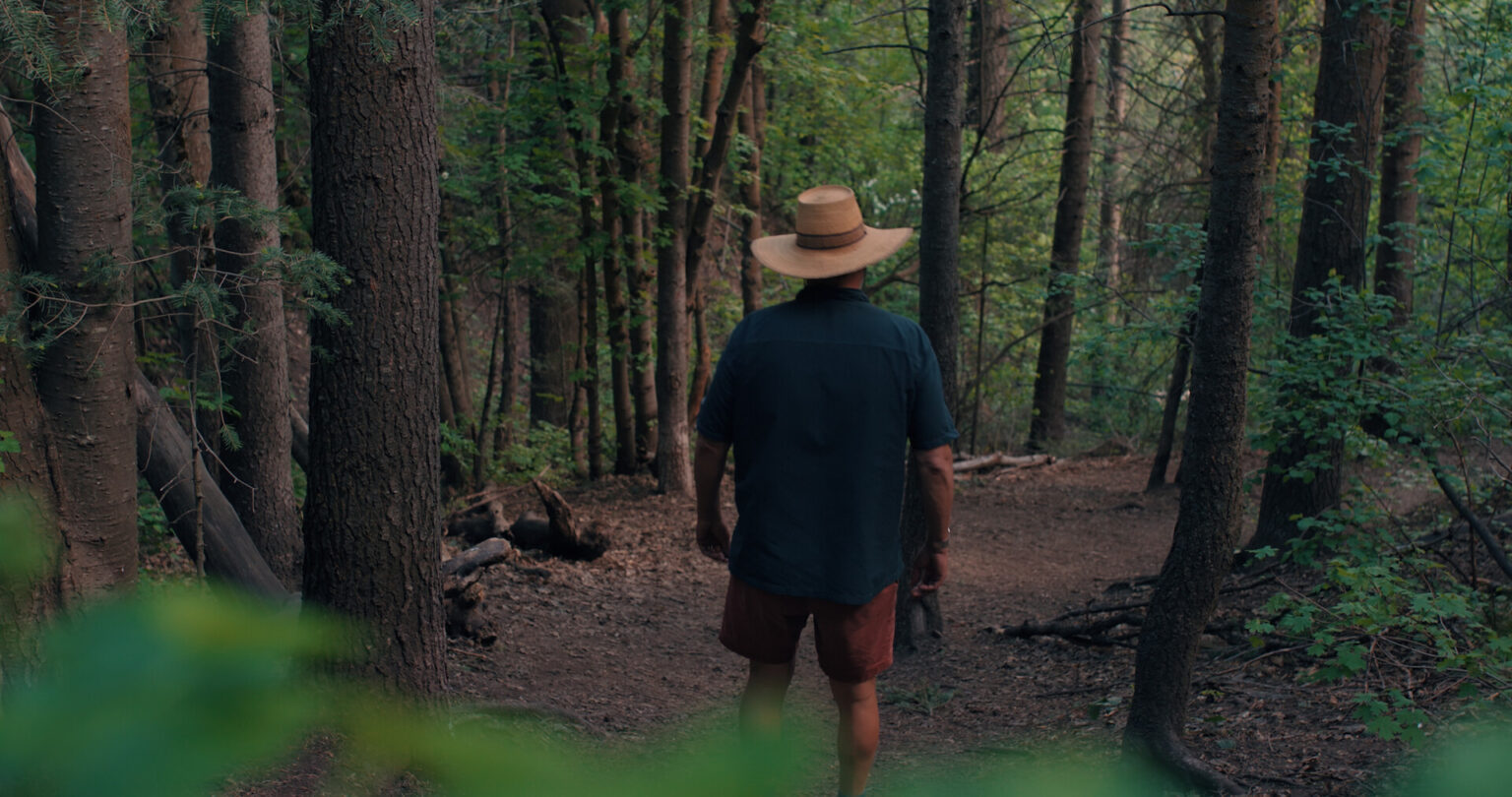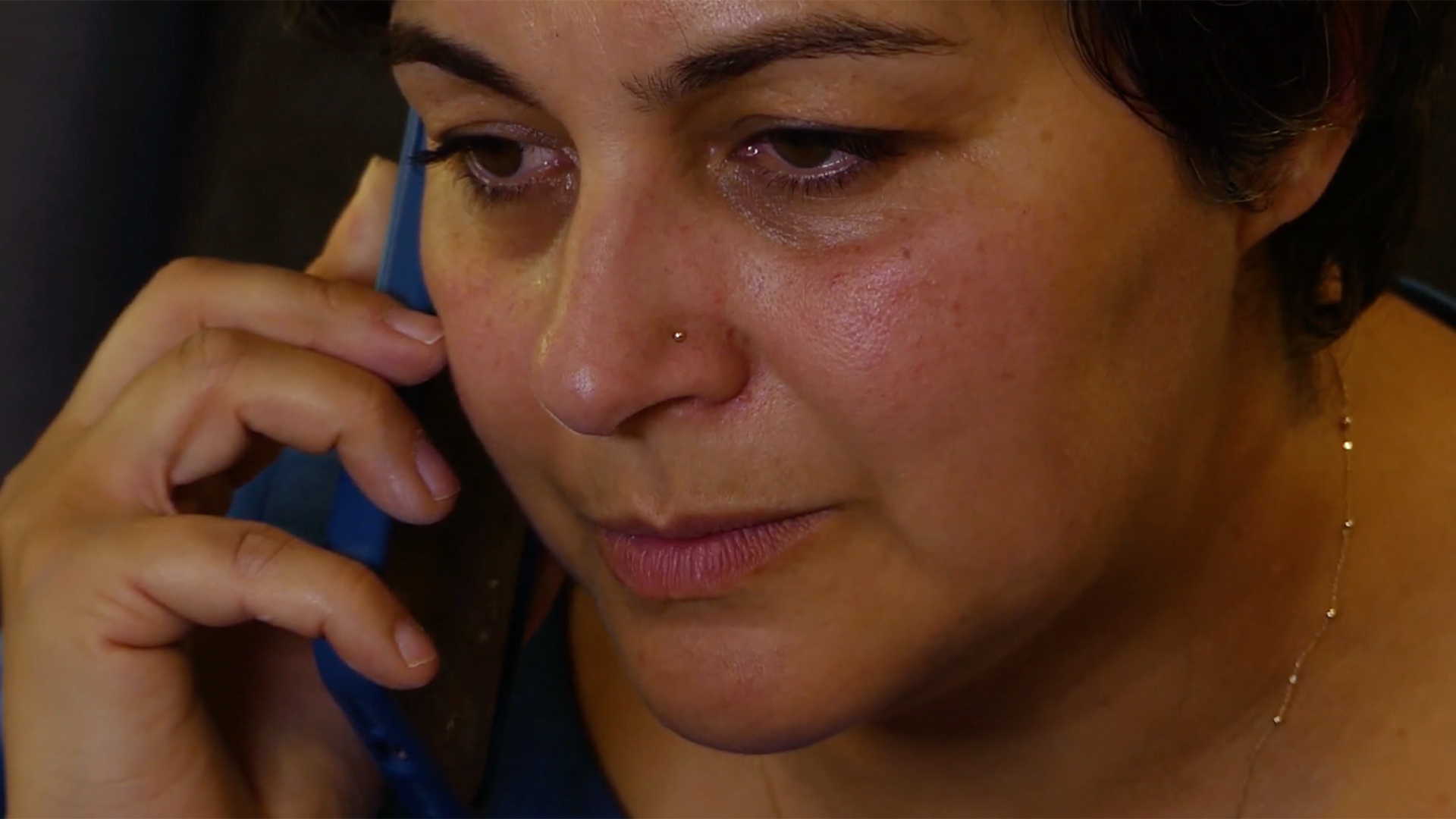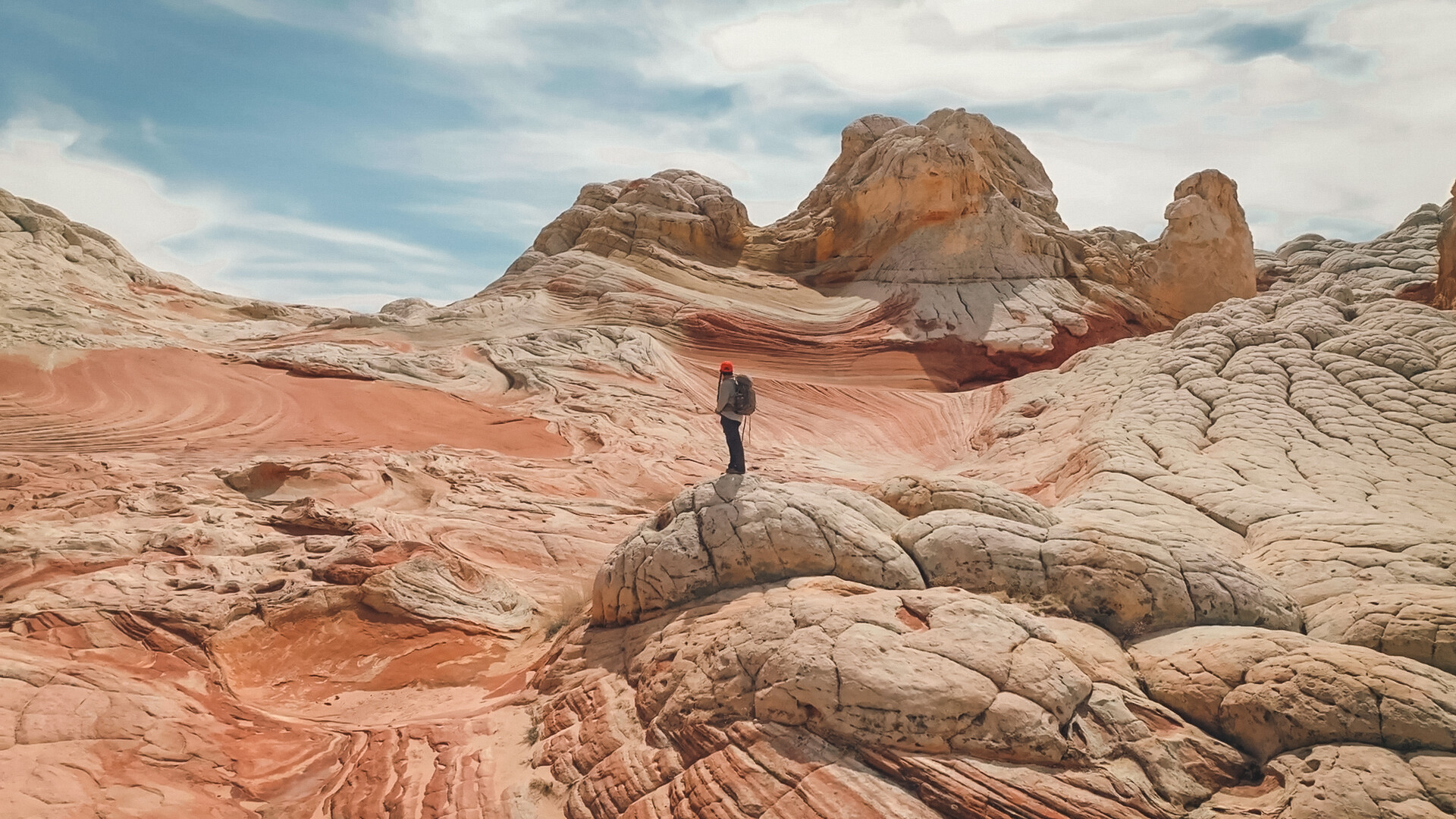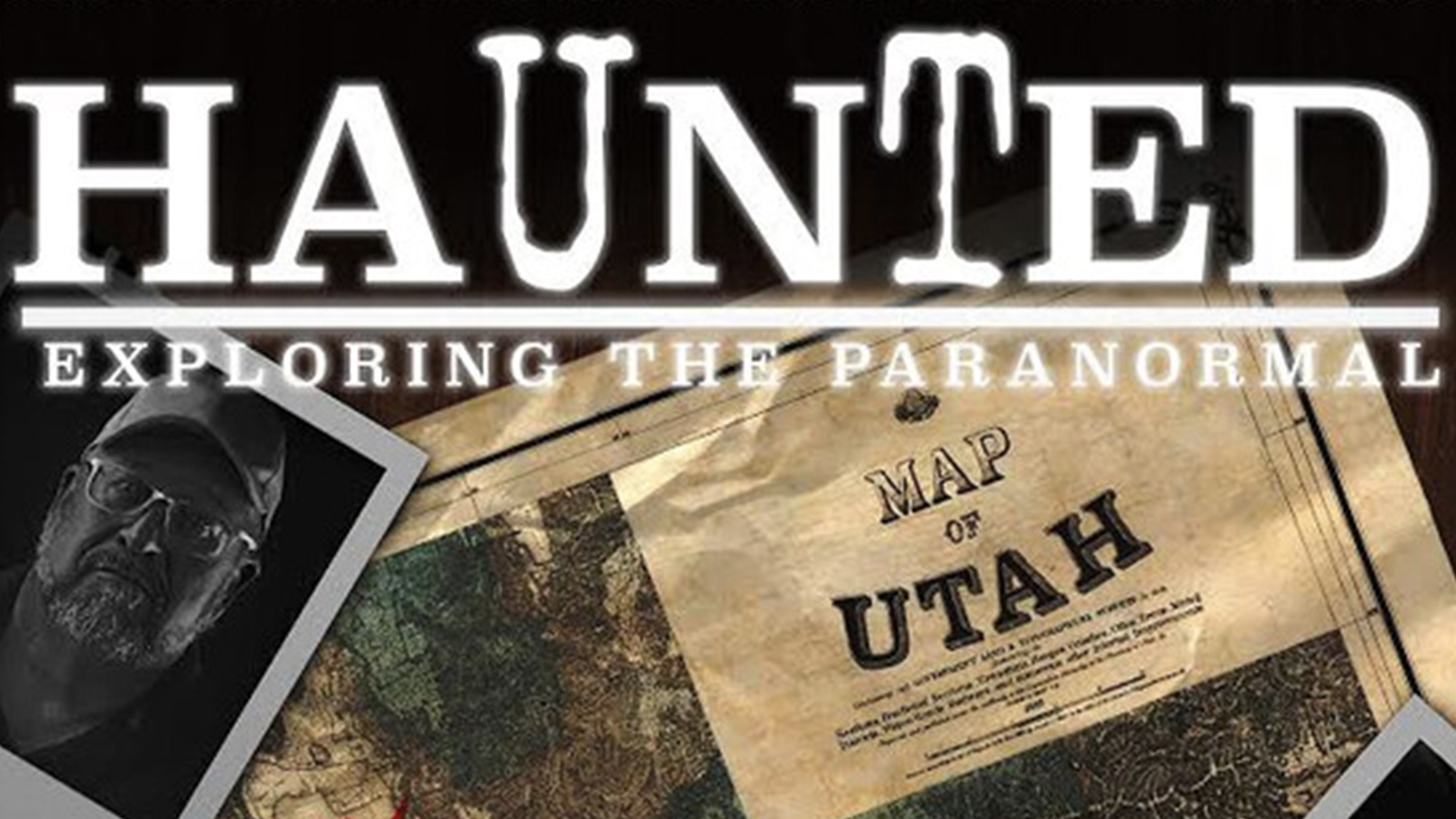Documentary
The Garden of Peace

I love this beautiful state that I live. In the serene landscapes of Utah, filmmaker Walter Mirkšs created a seven-minute documentary, “The Garden of Peace,” telling the story of Chris Newton, a certified forest bathing guide, and his discovery of the Japanese art of self-care. The documentary provides a glimpse into the beauty of nature and the rejuvenating practice of forest bathing.
Mirkšs, the producer and director of the documentary, shared the origins of the project during an interview with me earlier in the week. Mirkšs recounted that the idea sprouted from a chance encounter with Chris Newton over a year ago while working on a different project for an advertising agency. Mirkšs, having a deep connection with nature, was immediately drawn to Newton’s passion for forest bathing, sparking the inspiration to create a short film on the subject.
The filmmaker’s favorite aspect of crafting “The Garden of Peace” lay in the immersive experiences of capturing the footage. Over a 10-month period, Mirkšs ventured into nature regularly, letting the beauty of the surroundings speak for itself.
“I definitely enjoyed just being outdoors, seeing the sights and breathing the fresh air” said Mirkšs.” “All I really had to do was point the camera and press record and nature did the rest.”
While the production was relatively hassle-free, Mirkšs acknowledged the challenges of balancing the project with a full-time job. Finding time and energy for a passion project can be demanding, and coordinating with Newton for additional shots added an extra layer of complexity. Despite these hurdles, the filmmaker found solace in the overall process.
Reflecting on the journey, Mirkšs revealed a desire to delve deeper into the subject of forest bathing. He acknowledged that the documentary, though intentionally short, could have explored the history and art of forest bathing more comprehensively. This reflection serves as a testament to the filmmaker’s commitment to continuous improvement in his craft.

As for the audience, Mirkšs revealed that the hope is for “The Garden of Peace” to premiere at the Utah Film Festival, given its close connection to the state. Most of the footage was shot in Utah, and both Newton and Mirkšs reside in the picturesque region. However, if the premiere doesn’t materialize at the festival, Mirkšs remains open to sharing the documentary online for a broader audience to experience.
For those curious about future projects from Mirkšs and Newton, the filmmaker humorously admitted to having no social media presence. Instead, he suggested keeping an eye on the Utah Film Festival’s schedule, teasing that viewers might discover his works through festival screenings.
“The Garden of Peace” promises to be a visual and introspective journey, inviting audiences to explore the transformative power of nature and self-care. As the anticipation builds for its premiere, the documentary stands as a testament to the beauty that can be found in the quiet moments of reflection and the embrace of the natural world.
I love relating the stories of filmmakers like Mirkšs and Newton. At the Utah International Film Festival, we get to showcase the final work of talented filmmakers every year. And the deadline for submissions is looming around the corner, December 31st. Mirkšs will not have to wait much longer after the deadline as films will be selected by January 15th. Now it’s time for me to hit the road and discover more fantastic storytellers. See you on set.
Documentary
From the Dust

Directed by Tonya Papanikolas
Warning – This review contains spoilers.
From the Dust tells the poignant story of Anastasia, a woman who embarks on a journey of healing after a traumatic discovery in her marriage. Through the art of pottery, Anastasia finds a way to rebuild her confidence and self-worth after the emotional scars left by her husband’s betrayal. Watching this documentary, I was struck by how effectively it captures the process of personal recovery, showing how something as simple as creating art can become a lifeline in the aftermath of such intense pain.
The narrative is deeply personal, and the documentary does a beautiful job of drawing the audience into Anastasia’s emotional world. I was particularly moved by the way she shared her story with such honesty, describing not only her trauma but also her gradual rediscovery of herself through pottery. It’s not just about the act of creating something—it’s about the empowerment that comes from doing something for oneself, especially when life feels like it’s falling apart. I found Anastasia’s journey compelling, and I believe many audiences will connect with her story of resilience and self-reclamation.
Technically, the documentary is solid. The lighting, sound, and editing were all handled well, ensuring that Anastasia’s story was front and center without distractions. The cinematography particularly stood out to me in the way it captured the pottery process, highlighting the tactile nature of the art form. The shots of Anastasia’s hands shaping the clay mirrored her emotional recovery, a subtle but effective visual metaphor that really added depth to the film. While there was nothing groundbreaking in the technical aspects, everything came together smoothly, allowing the emotional heart of the film to shine through.
For me, From the Dust felt both intimate and relatable. Although I haven’t personally experienced the kind of betrayal Anastasia did, the universal themes of healing and rediscovery resonated. The documentary is an emotional watch, and I believe many viewers, particularly those who have faced similar challenges in their own relationships, will find it moving. The documentary avoids falling into melodrama, instead offering an authentic portrayal of a woman who is simply trying to find her way back to herself after being shattered by betrayal.
In summary, From the Dust is a thoughtful and moving documentary that explores how art can become a powerful tool for healing. Tonya Papanikolas crafts a sensitive and relatable portrait of a woman finding her strength in the wake of deep emotional wounds. With its strong visuals and heartfelt narrative, the film is likely to resonate with audiences who appreciate stories of resilience and self-discovery.
Documentary
A Life of Intent: Growing Desert Roots

Directed by Caroline Boyd
Warning – This review may contain spoilers.
A Life of Intent: Growing Desert Roots takes us through the journey of Shelly, a nature photographer who found solace and meaning in her art after a traumatic brain injury at 19. Shelly’s story, set against the vast and serene landscapes of the Southwest, is both inspiring and moving. I felt drawn into her process of healing and self-discovery, especially as she uses photography to navigate the challenges brought on by her injury. Her resilience shines through and I couldn’t help but admire her determination to live a life filled with purpose.
The documentary beautifully weaves together breathtaking visuals of the desert with Shelly’s personal narrative. The cinematography is one of the film’s strongest points—capturing the Southwest in all its splendor, with vibrant shots of nature that contrast with Shelly’s more intimate still photography. The juxtaposition of these large-scale live images with her personal photographs gave me a deeper connection to her story, highlighting the power of nature as both a subject and a source of healing. However, there were moments where I felt that the visuals didn’t fully align with the dialogue, which left certain scenes feeling somewhat disjointed.
Caroline Boyd’s emphasized Shelly’s transformative journey and the healing power of nature. This theme is apparent throughout, though there are moments where the editing and sound design could have been tighter to create a more seamless flow. The scene where Shelly speaks about the tree for example, felt a bit forced and I would have liked to see that story unfold more naturally. Still the overall message of the film—resilience through creativity and connection with nature—came across clearly and left me reflecting on how we all find ways to cope with life’s challenges.
Now onto the technical side. The cinematography is a highlight of the film, especially in the way it captures the beauty of the desert and Shelly’s connection to it. The background music complemented the visuals well, heightening the emotional impact without overwhelming the story. I found that the editing could have been stronger in certain parts, as some scenes didn’t flow as smoothly as others, particularly when the focus shifted between Shelly’s personal story and her professional work as a guide. I also noticed that while Shelly’s monologue was touching, it had to do a lot of the heavy lifting to convey the film’s deeper themes and it felt like the narrative was leaning too heavily on her words instead of letting the visuals tell more of the story.
A Life of Intent: Growing Desert Roots is an inspiring exploration of Shelly’s journey toward acceptance and healing through photography and nature. Its heart is in the right place, and Shelly’s story is one of courage and resilience that will resonate with viewers. The documentary effectively shows the power of art as a tool for personal growth and reminds us of the beauty that can be found even in the most challenging circumstances.
This documentary offers a reflective and heartfelt look at one woman’s journey to reclaim her life after trauma. The emotional depth and breathtaking visuals make it an inspiring watch. Audiences who appreciate the intersection of nature, art, and personal resilience will connect with Shelly’s story.
Documentary
haUnTed – Exploring The Paranormal

Directed by Tanner Alex Reyburn and Daria Pustovoytova
Warning – this review may contain spoilers
haUnTed – Exploring The Paranormal is a documentary that takes viewers on a journey through Utah’s paranormal scene, featuring interviews with psychics, paranormal investigators, and people who’ve had supernatural experiences. I found the variety of perspectives interesting, especially since they came from such different backgrounds. Hearing stories from those who claim to have encountered the paranormal kept me engaged, but I felt like the film struggled to tie everything together. At times, it jumped from one subject to another too quickly, and I found myself wishing for more focus. The ghost hunt toward the end seemed like it would be the film’s climax, but it felt rushed and didn’t deliver the intensity I was expecting.
The interviews were engaging, with some genuinely spooky moments, but I think the documentary bit off more than it could chew. It tried to explore so many different aspects of the paranormal world, and as a result, it sometimes lost momentum. The lack of cohesion between interviews and the ghost hunt made it harder for me to stay fully immersed. I appreciated the range of experiences shared, and I think paranormal enthusiasts would enjoy the variety of stories. Skeptics, however, might find the lack of solid evidence or a clear narrative a bit frustrating.
From a technical filmmaking perspective I noticed a lot of inconsistency. The interviews were well-lit and composed, which I appreciated, but once the documentary shifted to the ghost hunting segment, things went downhill a bit. The footage became too dark, and some shots were out of focus, which made it hard to follow what was happening. Sound was another issue, with some interviews being crystal clear while others were hard to hear. The music was subtle, which I liked, but it didn’t do much to elevate the tension during the ghost hunt, which felt like a missed opportunity. The editing, especially in the ghost hunting scenes, felt a bit disjointed, and the constant use of fades sometimes took me out of the experience.
I didn’t find myself personally connected to the film, but I did enjoy some of the stories, particularly those that offered a more eerie or mysterious tone. haUnTed – Exploring The Paranormal had potential, but I think it would have benefited from a more focused narrative and a stronger conclusion. If you’re a fan of paranormal stories, you’ll probably find something to enjoy here, but if you’re looking for a truly compelling ghost hunt or solid proof of the supernatural, it might leave you wanting more.










